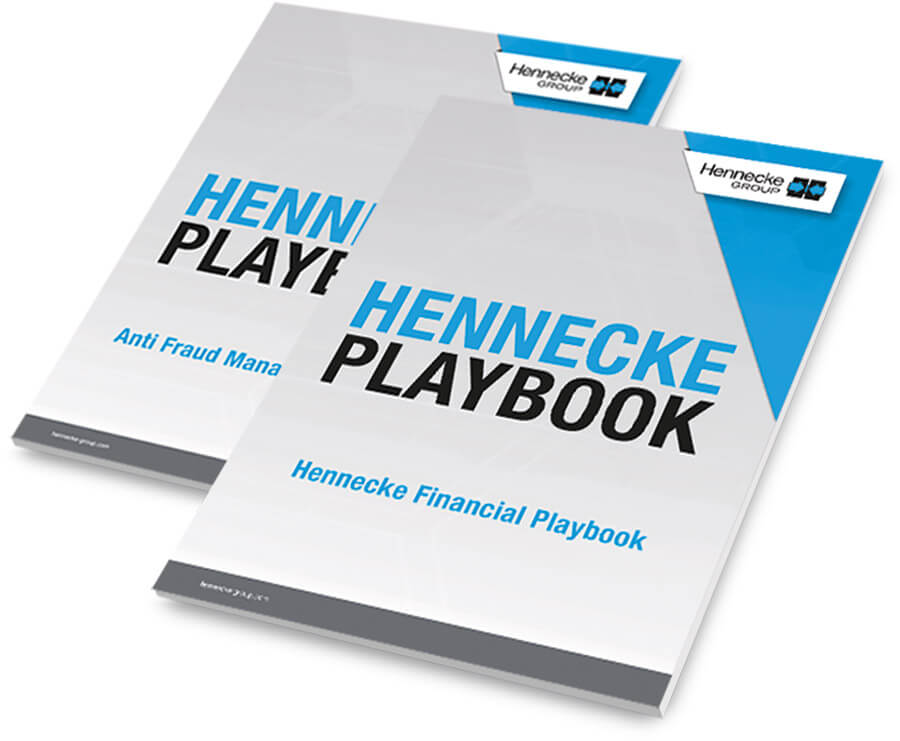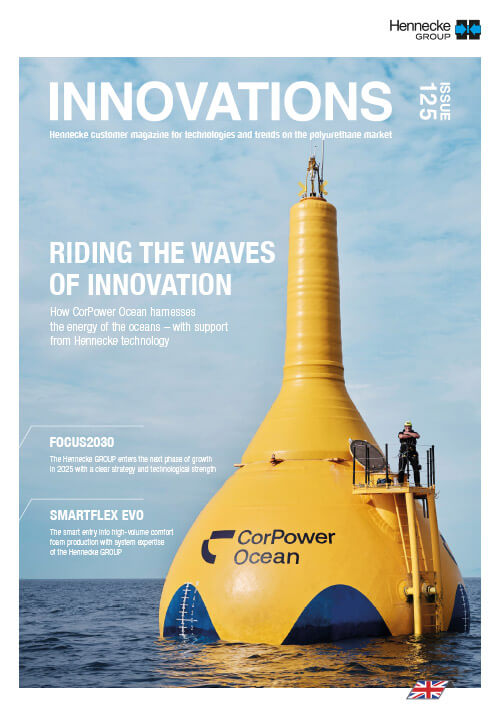Certified quality, practiced responsibility
How Hennecke sets global standards with ISO 9001, 14001, and 50001 and anchors them sustainably through the business system
In times of growing regulatory requirements, rising customer expectations and the increasing importance of ESG issues, one thing counts above all: reliability. The Hennecke GROUP meets this demand with a clearly structured, systematic approach. International certifications make this commitment visible to customers and partners, as well.
The management systems of all four international Business Units – Germany, Italy, China, and, as of this year, the US – are certified to ISO 9001. The sites in Germany, Italy, and China also already meet the requirements of ISO 14001. The certification of the U.S. site in Pittsburgh is the next step. The Business Unit Germany sends another signal: The Sankt Augustin site has been ISO 50001 certified since 2015. This standard stands for consistent and verifiable energy management.
For Sabine Rudolf, Vice President Business System & Sustainability, certifications are not an endpoint but rather a milestone – what truly matters is how they prove their worth in practice. “Certifications only bring real benefits if they are anchored in daily operations and continuously developed further,” she explains. That is exactly the case at Hennecke. This has been made possible by the group-wide implementation of the Hennecke Business System (HBS), which aligns all locations through uniform and binding working methods. This systematic framework has played a key role in supporting and accelerating the certification process at every site.
Global uniformity, implemented locally
“Take this as a signal to customers that we operate worldwide according to the same standards: quality-conscious, sustainable, and, above all, transparent – regardless of the production site,” explains Sabine Rudolf. This is because what ISO describes as a standard is systematically put into practice at Hennecke – with identical processes, defined methods, and company-wide playbooks. The introduction of a standardized audit concept and regular reviews ensure that the requirements are not only met, but also regularly evaluated for potential improvements.
The HBS forms the bridge between normative requirements and day-to-day action. It is more than just a process map. It not only defines the what, but also the how and why: with clear responsibilities, standardized workflows, and measurable goals. This creates uniform and systematically further developed standards that provide orientation in everyday work. For customers, this means: They can rely on precisely these standards, verifiable processes, and transparent structures worldwide – regardless of location.
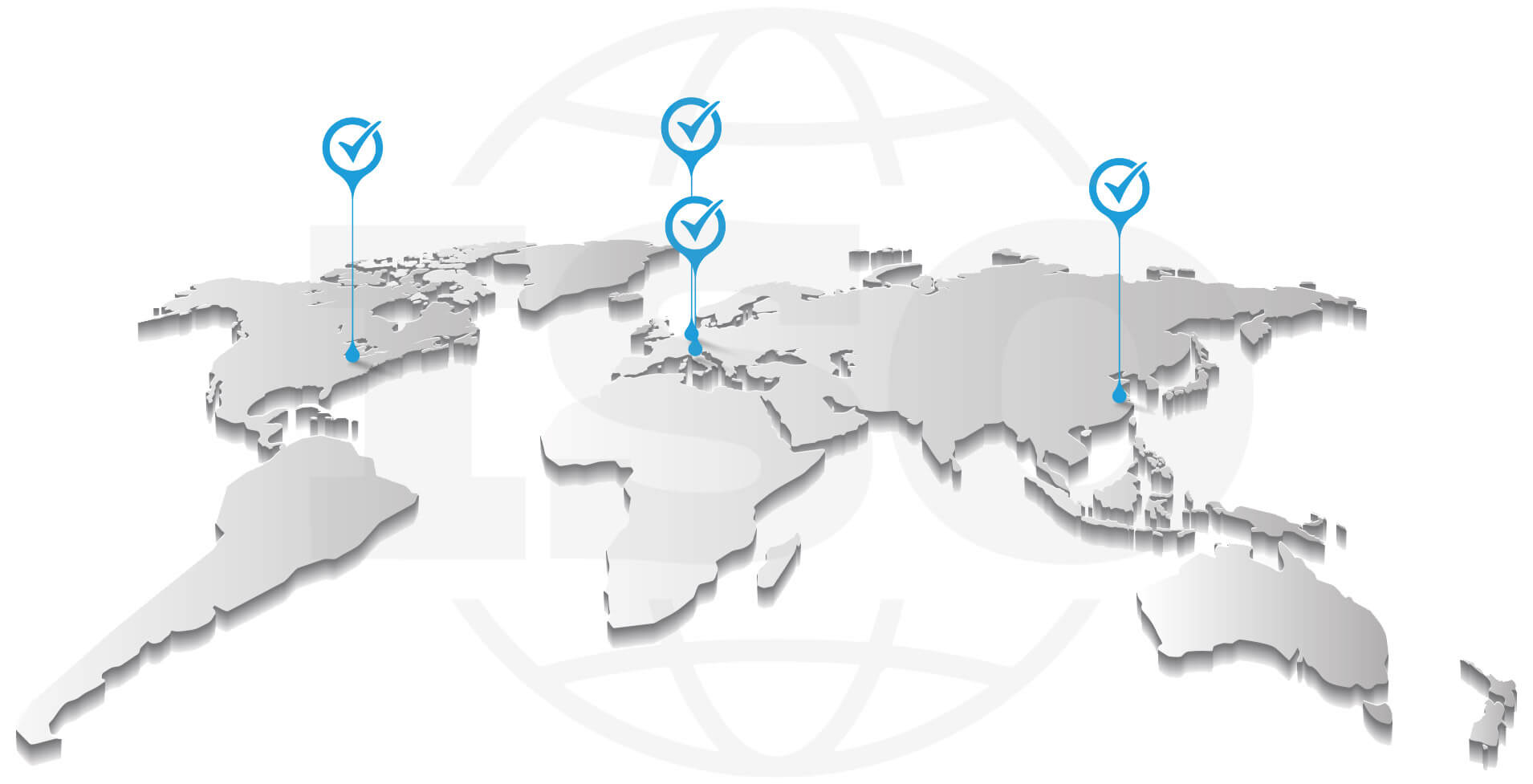

“We make sustainability visible and therefore manageable – not just in our own company, but along the entire value chain.”
Sabine Rudolf,
Vice President Business System & Sustainability
Structure that creates impact
A central element of the HBS is the use of proven management methods. These include, for example, project management roadmaps, which ensure uniform project planning and control, and the lessons learned process, which systematically makes knowledge from completed projects available for future projects. These methods meet the requirements of ISO 9001 with regard to knowledge retention and continuous improvement and enable us to learn from experience and implement improvements in a structured way.
In addition, there are specific playbooks that serve as operational guidelines in key areas. The Finance Playbook, for example, defines the group-wide management of financial KPIs and processes. The group-wide Anti-Fraud Management System (AFMS) is also part of the HBS – with clearly stipulated measures to prevent economic crime risks and strengthen internal integrity. Both instruments are not directly subject to ISO certification, but they make an important contribution to control, transparency, and structured implementation in ISO-relevant areas. They underline the holistic management approach of the HBS, which goes beyond normative requirements.
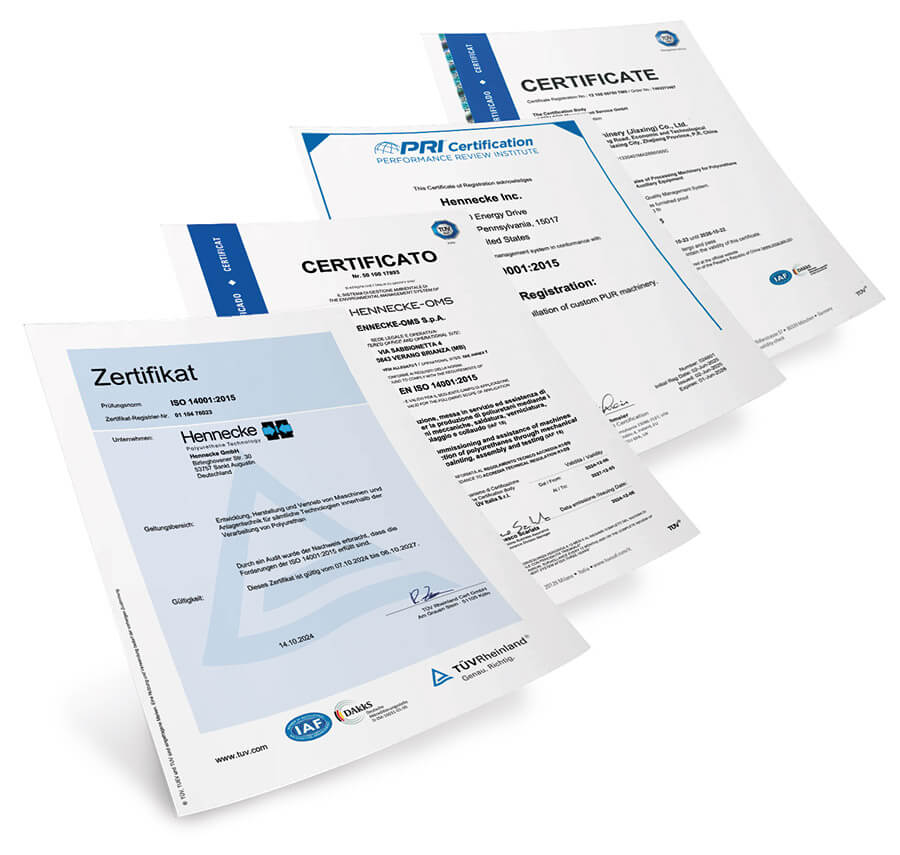
Making sustainability measurable
The extent of this approach is evident in the area of sustainability – one of the three central pillars of the HBS. The Hennecke GROUP’s ESG strategy is anchored in this pillar. It is based on the three dimensions “People, Planet, Profit” providing the foundation for responsible action along the entire value chain. All relevant ESG metrics from the areas of environment, social, and corporate governance are consolidated here and already evaluated annually. They represent the starting point for greater transparency, strategic control, and targeted further development.
In addition, the importance of sustainability is also reflected very specifically in management: As much as 15 percent of variable compensation is linked to ESG targets – a clear signal of the commitment to the topic within the company. In addition, an ESG-based supplier scoring system is in preparation, which will systematically integrate environmental and social criteria into procurement in the future. Sabine Rudolf emphasizes: “We make sustainability visible and therefore manageable – not just in our own company, but along the entire value chain.”
A central focus is on environmental protection – in particular the avoidance and reduction of emissions in accordance with ISO 14001, which requires systematic environmental management along the entire product life cycle. Emissions should not only be reduced but avoided altogether wherever possible or replaced by technological alternatives. At the same time, Hennecke is specifically developing products that help customers to avoid emissions. “Our own production accounts for only a fraction of our total emissions. In fact, more than 99 percent fall into what is known as Scope 3 – outside our direct sphere of influence. The majority of this – around 95 percent – occurs when our machines are used by customers. That’s why we can’t just think about sustainability internally, but have to start where the greatest leverage lies,” explains Sabine Rudolf.
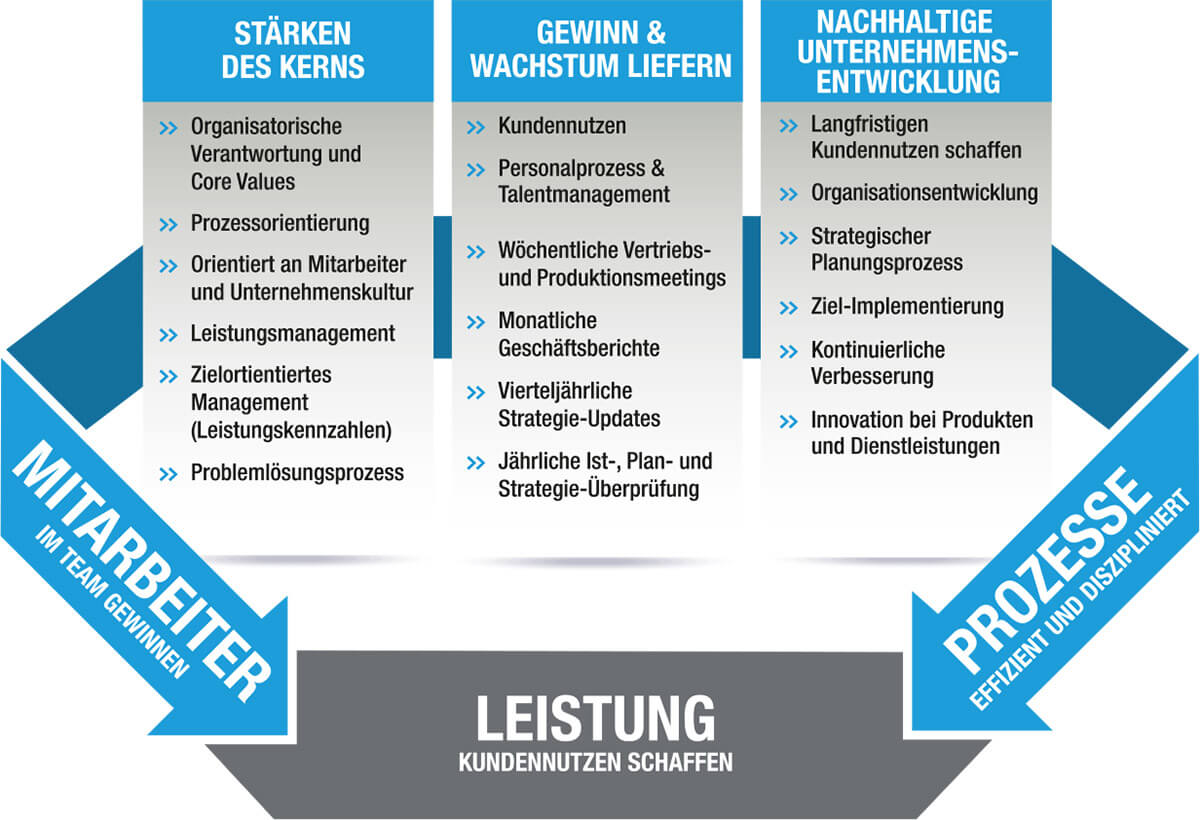
A system that creates trust
The HBS combines structure and clear principles. It translates strategic goals into clear processes, defined methods, and measurable targets. At the same time, it combines global requirements with local action – through clear roles, standardized procedures, and transparent processes.
The HBS gives the company stability, promotes cooperation across site boundaries, and creates a common language for quality and responsibility. For Sabine Rudolf, one thing is clear: “When we at Hennecke talk about sustainability, we don’t just mean environmental aspects. It’s about the interplay between quality, compliance, integrity, and social responsibility.” This holistic perspective is also reflected in the structural embedding of the topic. Governance, project work, leadership, and process management follow common principles and make Hennecke a reliable partner worldwide.
The consistent application of the Hennecke Business System, complemented by solid ISO certifications, has created a foundation that goes far beyond regulatory requirements. It creates trust among customers, security for employees, and transparency for all stakeholders.
